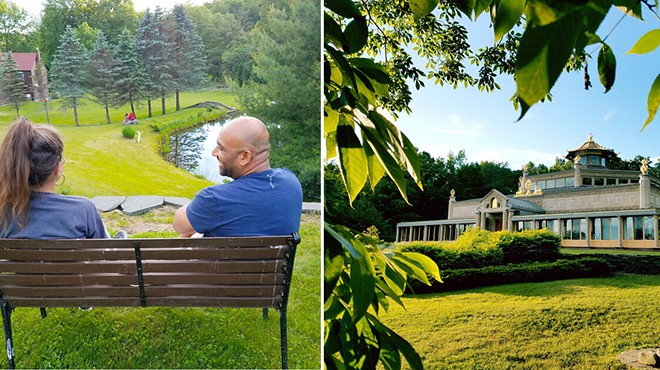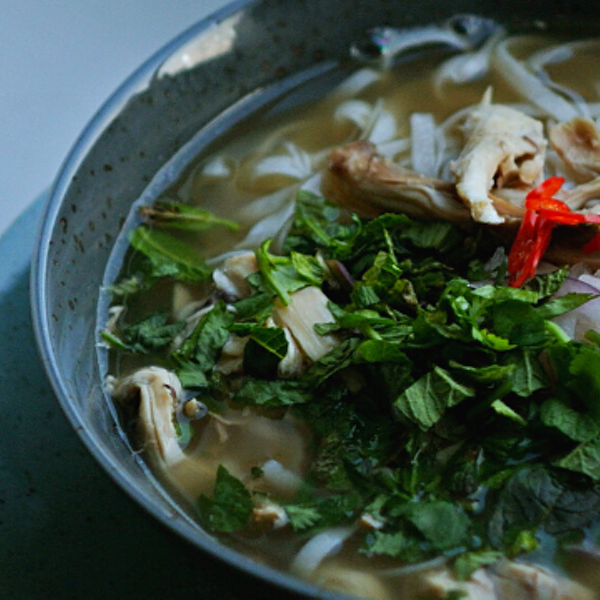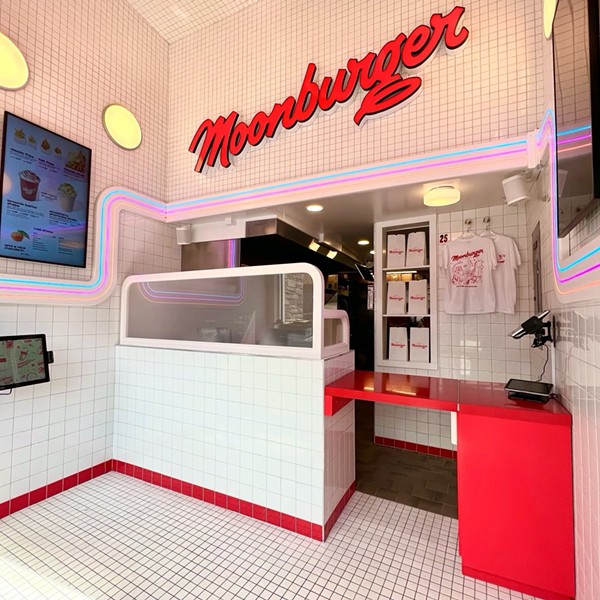
Truffled parsnip pasta with lemon-sage cream. Butter lettuce with baby arugula, radicchio, fine herbs, shallots, lemon, and olive oil. One is from a raw food restaurant, the other isn’t. Which is which? And what is raw food anyway?
The raw food diet is an organic, vegan cuisine where nothing is processed, pasteurized, or heated above 104 to 118 degrees (depending upon whose philosophy you subscribe to). Also called live food, living cuisine, and sun food, the premise is that heat destroys the live, beneficial enzymes.
Proponents of raw foods credit Ann Wigmore with pioneering the modern-day regime and bringing the benefits of wheatgrass juice into the public consciousness. Wigmore, a Lithuanian-born nutritionist, recounts in Why Suffer? How I Overcame Illness & Pain Naturally that Western eating habits had ruined her health by the age of 50. Once Wigmore developed what she calls the living foods lifestyle, it took her three years to regain her health—she claims to have healed herself of colon cancer—and ultimately change her life.
In a nutshell, Wigmore’s thesis states that there are two main causes of illness—nutritional deficiency and toxicity. Nutritional deficiencies come from people’s inabilities to digest and draw nourishment from cooked foods, and toxicity is linked to improper elimination of cooked foods from the body. Wigmore was an energetic educator until her death in 1994 at the age of 83.
Raw Power
Raw food can be as much—or as little—a part of one’s life as one chooses. It might mean eating more fresh fruits and salads. It might mean choosing to go one day a week without eating anything cooked. Though many raw foodists are vegans, Jennifer Cornbleet, author of Raw Food Made Easy for 1 or 2 People and a chef and instructor at the Natural Gourmet School in Manhattan, occasionally eats fish and a bit of goat cheese. She does this primarily when on the road or eating out. “Eating more natural, unprocessed fruits and vegetables is good,” she says. “But not everyone knows how to do it simply and make it tasty. That’s what I teach in my classes—not a philosophy.”
Cornbleet stressed that eating raw is not the culinary equivalent of jumping off a cliff. “It’s important for people to realize that eating raw foods doesn’t need to be an all-or-nothing thing,” she explains. “A small percentage of people do eat 100 percent or nearly 100 percent raw foods, and it is possible to be healthy doing so, but this isn’t practical for most people. Eating even 50 to 75 percent raw can improve one’s health and vitality. Just because something is ‘raw’ doesn’t mean it’s the healthiest thing. Living on all the raw desserts out there certainly isn’t healthier than eating steamed vegetables.”
Manna from Heaven
Some raw food preparation requires extensive planning, which can cut into the spontaneity, and practicality, of getting dinner on the table. It also requires rethinking of old recipes and procedures. For example: In a classic French toast recipe, you soak bread in an egg-milk mixture, fry it, and serve it in about 10 minutes from start to finish. Without direct heat, it takes much longer to prepare French toast the raw food way.
Since nothing is heated above 118 degrees, a dehydrator is frequently used to “cook” foods.
Matthew Kenney and Sarma Melngailis’s recipe for Cinnamon-Date French Toast with Bananas, Walnuts, and Maple Syrup, from Raw Food, Real World, looks like this: Place cinnamon-date manna bread slices in a shallow baking dish. In a medium mixing bowl, whisk together nut milk, maple syrup, cinnamon, nutmeg, and salt. Pour over the bread slices to cover.
Seems straightforward enough. Except that manna bread isn’t something you can run to the corner deli and pick up. It’s a dense, slightly chewy bread that is risen at very low heat. It’s found in the freezer section at selected health food stores.
Commercially made nut milks aren’t used, because heat is involved in their processing. To make raw-nut milk at home, one can soak raw nuts for four hours or more and put them in a high-speed blender like a Vita-Mix or a food processor with filtered water, agave nectar, and sea salt. Or you can try making 30-Second Nut Milk, using raw nut butter, water, agave, vanilla extract, sea salt, and coconut butter. Either way it’s another procedure, and if you’re doing the soaking, it adds at least four hours to the preparation time.
After the nut milk is made, you soak the bread for an hour. Then you dehydrate it for about four to six hours on one side, flip it over, and dehydrate it for four more hours on the other side until it’s slightly crispy.
That’s at least 10 hours of dehydration time and nut milk preparation. If you’re serving it with candied walnuts, those also need to be dehydrated, for at least 12 hours. In total, that’s 22 hours of dehydration time. The rest of the prep is generally blending different nut milks and soaking or chopping nuts.
Many of the recipes in Kenney and Melngailis’s cookbook, as well as some of the other popular raw food books like Charlie Trotter and Roxanne Klein’s Raw and Matt Amsden’s RAWvolution call for long lists of exotic ingredients and expensive equipment. It does the home cook well to remember that these books feature five-star food that happens to be made at home. While it’s fun if you’re feeling ambitious, raw food need not be so complicated and not all recipes require such devotion; Raw Food, Real World includes an arugula salad with pear, spiced pumpkin seeds, and Meyer lemon dressing that can be prepared in a matter of minutes if you leave out the pumpkin seeds.
Full-Throttle Juicing
If you’re interested in trying raw food, an excellent place to start is Sunfrost Farms in Woodstock. The market and eatery has an excellent juice bar and sells shots of wheatgrass juice to go. Matthew Ballister, the owner of Sunfrost, is the son of Barry Ballister, who founded the business in 1972.
“We’ve had the juice bar the entire time,” says Matthew Ballister. “My father spent winters in the Yucatan and they had liquado stands there. He enjoyed the mangos, papayas, and avocados and wanted to sell them. He special-ordered mangos, and in the beginning could barely get through a case, so he created the Mango Crema [one of Sunfrost’s smoothies] to move excess product. The Papaya Maya was created the same way. We’re talking about live food, separating out the unnecessary part, the pulp. What remains is sweet, sipped, social, and pretty.”
Supposing you want to try making raw food. You’ll need a blender. Devotees swear by the Vita-Mix. It’s the Harley-Davidson of blenders—goes forward, reverse, and vroom, vroom, vroom. You can crush ice, coffee beans, and probably beer cans with it. But you’ll never get as fine a puree with a home blender as you will at a juice bar, so you may not want to drop $400 on a Vita-Mix. And you’ll also need a juicer or access to fresh juice, plus a dehydrator if you’re really going full-throttle.
One key raw juice ingredient is agave syrup, a natural sweetener extracted from the same munificent cactus that gives us tequila. Like maple syrup, agave comes in light and dark versions. It has a lower glycemic index than sugar or honey, which means you don’t have the blood sugar peaks and valleys.
Organic Nectars, started by former marketing consultant Lisa Protter and former TV sound engineer Steve Trecasse, sells both light and dark agave as well as raw cacao powder, dried goji berries, and chocoagave syrup, an unctuous, pure chocolate, one-way ticket to nirvana. It’s roughly 50 calories per tablespoon and full of antioxidants. Banana slices or strawberries dipped in chocoagave make an effortless dessert. Milk from young Thai coconuts, the kind with the pointy tops, are used to make smoothies and soups, while the flesh is used for noodles, “ice cream,” puddings, and other dishes. Nama Shoyu, an unpasteurized soy sauce, is also a staple.
Going Goji
A cold day in early February found me in a West Hurley kitchen with cayenne-colored walls, massaging extra-virgin olive oil into kale. I did so at the behest of vegan and raw foods chef Roni Shapiro, in an attempt to learn more firsthand. Unbeknownst to her, kale, and its first cousin cauliflower, are the monsters under my culinary bed. I fear them. Deeply.
Shapiro hands me a glass with water and goji berries in it. Goji berries resemble small, reddish prunes. The antioxidant darling of the Himalayas, goji berries are allegedly responsible for everything from eternal youth to high sperm count. Even Dole has jumped on the goji berry bandwagon, distributing Tibetan sun-dried goji berries.
“No one food is everything,” Shapiro says. “But goji berries are one of the fun things that the raw foods movement has hooked into and found to have all of these neat benefits.”
She hands me a plate of dessert treats: raw chocolate macaroons, candied walnuts, and dehydrated bananas. I ask her how long she’s been raw. (In raw food argot, you don’t eat raw, you are raw.) She tells me she had been so for about eight months, but then started eating cooked food in the cold weather.
The dehydrated bananas are chewy, with a concentrated banana flavor. They’d make a great on-the-go snack. The macaroons are fudgy and dense.
As I continue massaging the kale, I watch its silvery-green leaves soften and turn a vibrant dark green, as though it had been steamed.
“Massaging the oil in starts the kale’s so-called ‘cooking,’” Shapiro explains. “It helps break down the cellulose. Slicing it really thin also does that.”
While the kale is absorbing the oil and sea salt, we get to work on the main course, “Fettucine” Pomodoro with Pine Parmesan “Cheese.”
Shapiro hands me a vegetable peeler and tells me to make zucchini noodles by peeling off long strips. “You can get some really expensive equipment like a mandoline, but you can also use a vegetable peeler without a huge commitment,” she says.
Shapiro is making the pomodoro sauce, which is comprised of sun-dried tomatoes and their soaking liquid, sea salt, black pepper, a fresh tomato, basil, and Kalamata olives. Except for the soaking time, this meal is ready in the time it takes to prep the zucchini, about 10 minutes.
Shapiro has plated our food: Kale Salad with Tahini Ginger Dressing, and the Fettucine Pomodoro with Pine Parmesan Cheese. She prepared the “cheese”—made from pine nuts that have been soaked, rinsed, and sprouted, then dehydrated for 24 hours—in advance.
So now it’s just me and the kale. I look at my nemesis and say a prayer to the vegetable gods, asking that I not embarrass myself. My hand speeds toward my mouth with a forkful of kale.
“It’s utterly delicious,” I tell Shapiro, surprising us both.
“You made friends with kale,” she says. “My job here is done.”
And I couldn’t stop eating it.
Resources:
Healthy Gourmet to Go (Roni Shapiro): www.carrottalk.com
Organic Nectars: www.organicnectars.com
Sunfrost Farms, Woodstock: (845) 679-6690
Natural Gourmet Institute: www.naturalgourmetschool.com
















